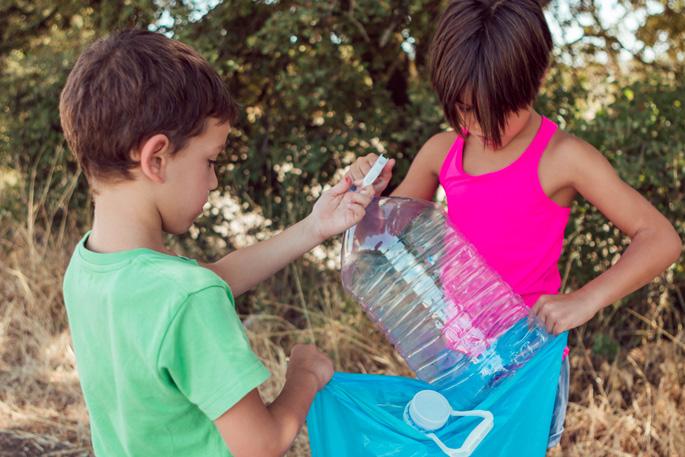
2 minute read
HOMESCHOOL CORNER
Learning, Serving, and Conserving
BY CRYSTAL LADWIG, PH.D.
One of the best things about homeschooling is being able to help our children learn and grow as we do life together. We do that when we go to the store, when we volunteer, and of course when we do school. Learning about conservation is one way that kids can learn, serve and contribute to their community all at once.

LEARNING, SERVING AND CONSERVING AT HOME
Learning doesn’t stop just because you’re “school time” is over. It happens all day long. Talk with your kids and model conservation habits in the home. Pay attention to how you use materials in your home. Do you reuse, repurpose and recycle? If so, don’t just do it. Talk about it. Model it. Encourage your kids to do those same things.
One particularly meaningful and educational activity you can do is an experiment with your kids. For one month, stress the importance of turning off lights and fans in rooms that aren’t being used. Limit water usage. Lower your air conditioner one or two degrees. At the end of the month, compare your utility bill to one from the same month last year. You should be able to get that online through your utility company. Compare how much water and electricity your family used. How much did you save? You might even treat the kids (and challenge them along the way) by using that money saved to go out for an ice cream treat!
Don’t forget those virtual field trips, too! Just google “virtual field trip clean energy,” and you’ll find a host of resources where you and your kids can learn more about clean energy sources by visiting power plants and seeing how clean energy sources conserve resources.
LEARNING, SERVING, AND CONSERVING IN THE GREAT OUTDOORS
We live in Florida, so we have to get outside and enjoy our beautiful weather, right? Of course! Go outside and do things you enjoy with your family this summer. Talk with them about the fresh air, the clean water, and the healthy trees and vegetation you see. If you travel with your family, look online or stop in at ranger stations for youth education guides. Most state and national parks have educational programs available. You may even choose to participate in an environmental clean-up event in your community.
Finally, when you are out with your family, remind them to leave no trace. The best way to interact with our environment is to leave only footprints behind. Help them understand the importance of not damaging anything they find or see. Talk about the importance of properly putting out any campfires you may have. You may even bring an empty grocery bag and gloves with you when you go out to pick up any trash or debris you may find. Show your kids how they can make the world a better place through the small act of picking up what someone else left behind.
We live in a beautiful state where we have the ability to enjoy being outside year round. By learning, serving and conserving, you can teach your children to appreciate what we have and make sure it’s available for their kids, too.



